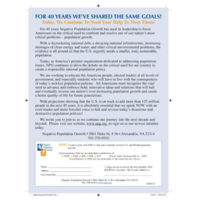The Sources of Unemployment
- Lindsey Grant
- February 1, 2012
- Forum Papers
- Forum Paper
- 0 Comments
When real hourly wages stagnated, many working people (now euphemistically called “the middle class”) tried to support their new consumption habits by increasing their mortgage debts – until the housing bubble burst.
The proponents of growth profited until like Ponzi schemes, it collapsed.
What Can Be Done? We cannot solve our employment problem, or the stagnation of wages, or the growing scarcities of resources, or the creep of inflation, until as a society we stop pursuing the myth of perpetual growth and learn the finite Earth paradigm instead. Our natural system is finite, and we have approached or passed its capacity to support our demands. We must adjust the demands, not try to force growth. Our task is to bring our system around to that mindset.
The Inchoate Revolution. Labor is coming to recognize, in a still inchoate way, that it is being had. The current Republican primaries are helping to educate the electorate by showing how little the rich pay in taxes. Recent news stories are showing us that Apple – the investors’ darling – produces its iPhones overseas (often in very bad labor conditions) and contributes very little to American employment. The Occupy Wall Street movement showed that many people have begun to realize that the astonishing growth in the wealth of the financiers, amid poverty and unemployment is divinely ordered. They are angry, but not yet focused.
We are mired in controversy. The Republicans seek less government, lower taxes, and more inequality. Their right wing would sharply reduce immigration, but the money interests don’t agree. The Democrats profess to be worried about unemployment, but they propose to reduce unemployment by means we cannot afford, and they condone record-breaking levels of immigration. Clearly, they think they are courting the “Hispanic vote”, but they may be wrong. So-called Hispanic leaders, many of them unelected, call for more immigration,9
In New Mexico, the new Governor is the daughter of Mexican immigrants, but she ran on a platform calling for denying driver’s licenses to illegal immigrants, and she won handily – in a state that is nearly half Hispanic.
Centrists predict a “revolution from the center”, but few of them identify the real problems or their formulated into a coherent program by any political party or political organization. I imagine that that will change, but it is likely to be lost in the tumult of sharpening class antagonisms. The current scene does not look propitious for the emergence of sane policies.10
Only a few small countries seem to have been able to develop a social consensus around a recognition of limits. Perhaps they could teach us something, or perhaps they can do it precisely because they are small and homogeneous. That is hardly applicable to the United States.
THERE IS MORE TO COME
“Shifting Shares” and Population Change. The problems are not confronted to the United States and we are not unique in our failure to find solutions. What is sauce for the United States is, even more, sauce for Europe and Japan. They have aging, high wage labor, long vacations, and early retirement, facing a flood of young immigrant labor desperate for jobs. They are less given to extolling the joys of mass migration and free trade than we are, and more protectionist, and for good reason. They are perhaps better prepared than we are, psychologically, to adopt policies to protect employment and their national interest, but they are more crowded and less endowed with the energy and raw materials that have moved into short supply.
U.S. population has quadrupled since 1900, but we are still among the most favored of nations in terms of arable land, minerals and energy resources per capita. We have a better base on which to maintain employment than do most countries. The situation is generally worst among the poorest countries, and it is there, because of population growth, that the future is bleakest.
The UN Population Division calculates that 2.9 billion people (42% of world population) are in countries presently below replacement level fertility. If it lasts, that low fertility will lead to smaller populations – IF immigration does not drive their population up. Another 2.8 billion people (40% of world population, including the United States) are in countries with average fertility within 50% of replacement level. We don’t yet know how far or how fast their populations will need to decline to stay in balance with food and other resources, or whether they can muster the will to do it, or will have the time, but those countries at least have some chance of a solution.
The problem is that those countries are not alone. The 58 “most fertile” countries pose an insuperable problem. The UN Population Division expects them to grow from 1.2 billion now to 4.2 billion in 2100, and from 18% to 42% of the world’s population. That is called shifting shares. The fertile replace the infertile.
- Feminism, Migration, And Population Policy: A Letter To My Friends - October 25, 2018
- TWO WHITE HATS (An NPG Footnote) - September 23, 2014
- THE TWO CHILD FAMILY - September 22, 2014

